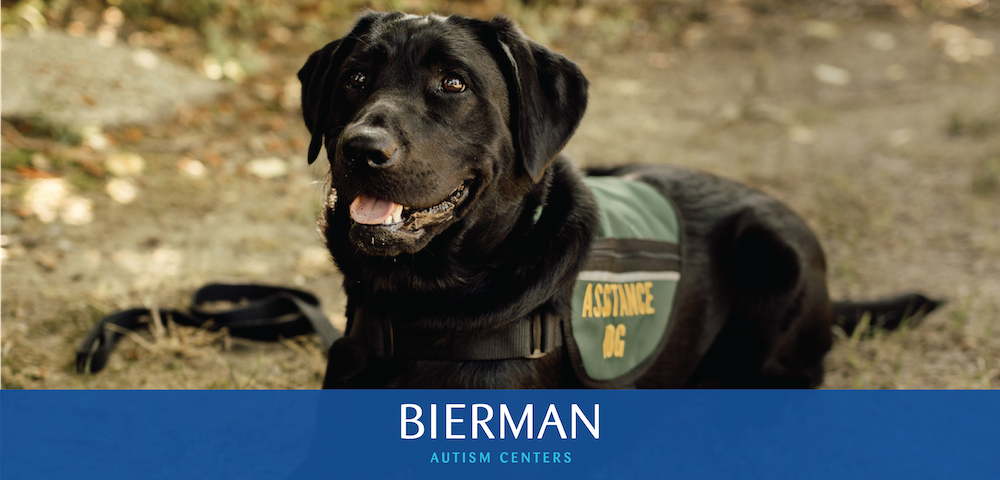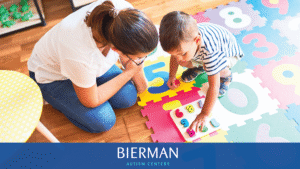Animal-Assisted Therapy (AAT) is a type of animal-assisted intervention with a trained professional incorporating an animal into therapy to target pre-determined goals. The American Veterinary Medical Association (AVMA) classifies animal-assisted interventions into three categories: (i) animal-assisted activities (AAA) that use companion animals, (ii) animal-assisted therapy (AAT) that uses therapy animals, and (iii) service animal programs (SAP) that use service dogs Animal-assisted therapy is differentiated by the presence of a trained specialist such as an occupational therapist, speech-language pathologist, or behavior analyst who is running the session. The therapist and an animal work together as a therapy team to engage the client in therapy activities.
What are the Different Types of Animal Therapy
(Pets, Service Animals, Emotional Support Animals, Therapy Animals, and Equine Therapy)
There are many opportunities for structured interactions with animals, and each has its benefits. It is important to determine what type of intervention is offered, as each will require a unique level of training. Assistance animals differ from pets, service animals, or emotional support animals. Animal-assisted therapy most often includes dogs trained from 8 weeks to two years old to specialize in assistance work. These dogs can go by several terms, including assistance, therapy, or facility. While programs with pets offer enriching opportunities to interact with animals, accredited assistance animals receive a more intensive degree of population-specific training and testing and thus provide a more sophisticated degree of support to their clients. As a therapist with a certified assistance dog, knowing the bounds of that practice is important. When I assess and develop goals for a client and incorporate my dog in the occupational therapy session, that is animal-assisted therapy. Volunteering at a local hospital with my dog would not be considered animal-assisted therapy, as I have not assessed or developed goals specific to that client.
The Benefits of Animals for Children with Autism
Animal-assisted therapy (AAT) involving trained dogs has shown promise in addressing communication, social engagement, maladaptive behavior, and fixed or restricted interests in children with Autism Spectrum Disorder (ASD). Research findings suggest that animal-assisted therapy involving either dogs or horses promotes positive verbal and non-verbal social behaviors in children and adolescents with ASD while simultaneously lessening the expression of isolating and aggressive behaviors (Berry et al. 2013; Christon et al. 2010; O’Haire 2013).
In a study by Becker et al. (2017), a treatment schedule of Social Skills Training (SST) and AAT, including a dog, was compared with standard SST using a repeated measures design. The results indicated that the participants in the AAT-SST group showed gains in social skills and social communication while simultaneously showing reductions in restricted and repetitive behaviors. Participants in the AAT-SST group also reported reductions in perceived loneliness and depressive symptoms and increased perceived social competence. Teacher-report measures also supported these findings.
A study by London et al. (2020) in the Journal of Autism and Developmental Disorders explored the perceptions of parents and caregivers regarding animal-assisted occupational therapy sessions that included dogs. The study identified “Engagement as a precursor to progress” as the overarching theme, supported by three subthemes: characteristics of the dog, therapeutic context, and goal-directed achievements. According to the participants, dogs’ non-judgmental and non-verbal nature helped create a stress-free therapeutic environment, making them approachable and supportive play partners for children. The study found that dogs encouraged social interactions between clients and therapists and increased engagement in therapy activities. The playful and enjoyable component brought by the dogs made therapy more appealing, especially for clients who may be hesitant to participate. Overall, the study concluded that clients who interacted with dogs during therapy sessions were more likely to attend, engage, and continue therapy with increased levels of engagement and regulation.
What goals can be targeted in animal-assisted therapy?
Animal-assisted therapy is a therapeutic technique that maximizes clinical outcomes. The interaction with the animal is not the goal itself; rather, the animal’s presence helps facilitate engagement in goal-directed activities. Therapeutic activities can be adapted to incorporate animals into a variety of sessions. A dog can be involved in an occupational therapy, speech therapy, or applied behavior analysis (ABA) session in the following ways:
1. Fine Motor Skills: A dog can be trained to read command words written by the child. For instance, the child can write the word “SIT” and show it to the dog, and the dog will sit. This technique motivates the child to practice writing to interact with the dog in a novel way.
2. Gross Motor Skills: Using a dog in a “follow the leader” style game to model gross motor actions can be an excellent play-based use of animal-assisted therapy.
3. Ball Play: Children can practice their motor skills by playing fetch. In this activity, the child throws the ball to the dog, the dog brings the ball back to the therapist, and the therapist throws the ball back to the child. This sequence naturally embeds opportunities for reciprocal play with both people and animals.
4. Feeding: Children can engage with novel foods by preparing a snack for the dog. Dogs will happily model trying new foods, and this activity can help children learn to interact with and try new foods as well.
5. Dressing: Dressing is not a particularly fun activity for anyone. Dressing up a dog as a shark or a taco brings a smile to anyone’s face! Kids can work on orientation, sequencing, threading, and fasteners to dress the assistance dog up in costumes before transitioning those skills to dressing themselves.
6. Communication: Dogs can be trained to have a repertoire of tricks they demonstrate following a word or gesture. Having a child use verbal, AAC, picture exchange, or gestural language with a dog to do the trick for them can be very rewarding and increase functional communication with the animal. Body language cues can also naturally occur as the child may be more likely to orient toward the dog and make sure the dog is attending visually before giving the command. This skill can be tremendously difficult for children when working with other people but approachable when working with an animal. When a dog spins, rolls over, pretends to sleep, or gives a paw, it reinforces that their language has meaning external to them, and they can use it to access and impact their environment.
What are Some of the Best Animals for Children with Autism? What Animals Should You Stay Away From?
Animal-assisted therapy can be a valuable tool for people with autism. The most effective animals for this type of therapy are dogs. Dogs have been working with humans for thousands of years and developed a strong human-animal interaction that makes them skilled at interpreting human behavior and responding accordingly. To ensure that therapy is effective, it is important to work with an accredited provider who can provide documentation to support their credentials and training processes. Hippotherapy is another area of practice that utilizes equine-assisted therapy activities. Horses can provide opportunities to improve core and postural stability, coordination, fine motor, communication skills, and sequencing during therapeutic horseback riding sessions. Hippotherapy has been associated with reduced cortisol levels in males with an autism diagnosis. While all animals may be considered for therapy, those that can respond reliably to cues and demonstrate engagement are recommended.
Conclusion: Does Animal Assisted Therapy Help Children with Autism
Animal-assisted therapy is a healthcare intervention that has gained popularity and has been supported by evidence-based research for physical and/or mental health diagnoses and developmental disabilities. The advancements in training and therapy techniques have positively impacted the autism population for those who enjoy the human-animal bond. Although this intervention may not be suitable for every child, it can potentially improve therapy outcomes for children who respond well to the technique. Children are often asked to do things they find difficult during therapy. Animal-assisted therapy can be a method that positively impacts their level of enjoyment during the session, which, in turn, enhances the quality of life and emotional and physical well-being of those who spend much of their childhood in therapy. The presence of an animal in the session can increase motivation, improve engagement, and support the child when engaged in activities they may find challenging. Animal-assisted therapy for children with autism offers promising benefits for children and their families.


